What may be said about .Connect file virus
.Connect file virus is a file-encrypting malware, more generally known as ransomware. It’s likely it is your first time encountering an infection of this kind, in which case, you might be particularly shocked. File encrypting malware uses strong encryption algorithms to encrypt data, and once they’re locked, you will not be able to open them. File encrypting malware is thought to be one of the most harmful infections you can find because file decryption is not possible in every case. 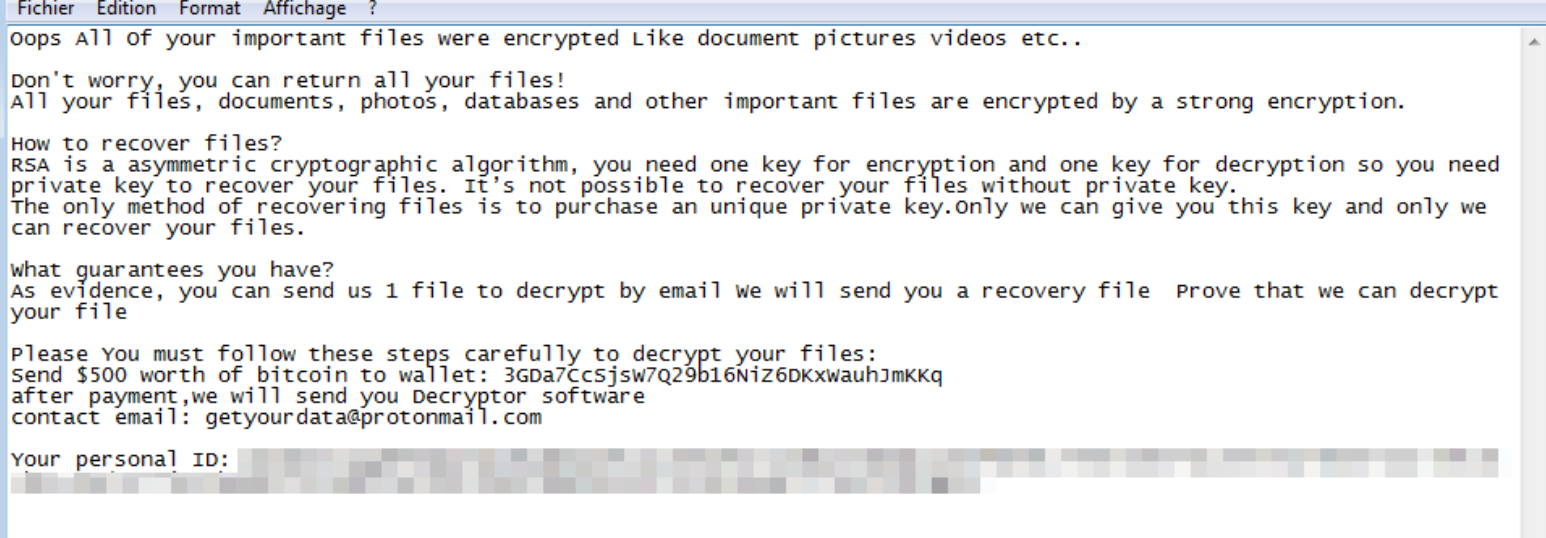
Criminals will give you the option of recovering files by paying the ransom, but that option is not recommended for a few reasons. Giving into the demands doesn’t automatically lead to decrypted files, so expect that you might just be spending your money on nothing. Why would people responsible for encrypting your data help you recover them when there is nothing stopping them from just taking your money. Moreover, the money you give would go towards financing more future ransomware and malware. Would you really want to support an industry that costs billions of dollars to businesses in damage. People are also becoming increasingly attracted to the business because the more people pay the ransom, the more profitable it becomes. Situations where you might end up losing your files can happen all the time so a much better purchase might be backup. And you can simply proceed to terminate .Connect file virus without worry. Data encrypting malware spread methods may not be known to you, and we’ll explain the most common ways below.
How to avoid .Connect file ransomware infection
You can generally encounter ransomware added to emails as an attachment or on suspicious download page. A lot of file encrypting malicious software rely on user carelessness when opening email attachments and more elaborate methods are not necessary. More sophisticated methods may be used as well, although not as often. Crooks don’t have to do much, just write a simple email that seems quite credible, add the infected file to the email and send it to potential victims, who may think the sender is someone credible. You will frequently encounter topics about money in those emails, because people are more likely to fall for those types of topics. Cyber criminals also commonly pretend to be from Amazon, and tell possible victims about some suspicious activity in their account, which would which would make the user less careful and they’d be more likely to open the attachment. There a couple of things you should take into account when opening email attachments if you want to keep your computer safe. Before anything else, look into the sender of the email. If you are familiar with them, ensure it is actually them by vigilantly checking the email address. Look for grammatical or usage errors, which are usually pretty glaring in those types of emails. You ought to also take note of how you are addressed, if it is a sender who knows your name, they will always include your name in the greeting. Vulnerabilities on your computer Out-of-date software might also be used as a pathway to you computer. Weak spots in software are usually identified and software makers release fixes to repair them so that malicious software makers can’t exploit them to contaminate systems with malicious software. As has been shown by WannaCry, however, not everyone rushes to install those updates. It’s crucial that you install those patches because if a weak spot is serious, all types of malware could use it. Patches can install automatically, if you find those notifications bothersome.
What can you do about your files
A data encoding malware will scan for certain file types once it gets into the device, and they’ll be encrypted as soon as they are identified. Your files won’t be accessible, so even if you don’t notice the encryption process, you’ll know eventually. You’ll know which of your files were encrypted because a strange extension will be attached to them. Some ransomware might use strong encryption algorithms, which would make file decryption potentially impossible. After all data has been encrypted, you’ll find a ransom notification, which should explain, to some extent, what happened to your data. The decryption tool offered will not come free, of course. If the note does not specify the amount you need to pay, you will be asked to email them to set the price, it might range from some tens of dollars to possibly a couple of hundred. Clearly, we don’t think paying is a good choice, for the previously discussed reasons. Try every other possible option, before you even consider complying with the demands. Try to remember maybe you don’t remember. Or maybe there is a free decryptor. Malware researchers may be able to crack the ransomware, therefore they could create a free program. Consider that before paying the ransom even crosses your mind. You would not have to worry if you ever end up in this situation again if you invested some of that sum into some kind of backup option. And if backup is an option, data restoring ought to be executed after you remove .Connect file virus virus, if it is still present on your system. Try to familiarize with how a data encrypting malicious program is distributed so that you do your best to avoid it. Stick to legitimate download sources, be vigilant when opening email attachments, and keep your programs up-to-date.
.Connect file virus removal
Obtain a malware removal utility because it will be needed to get rid of the file encrypting malicious program if it is still in your system. To manually fix .Connect file virus virus isn’t an easy process and if you are not careful, you could end up bringing about more harm. Thus, choose the automatic way. This tool is beneficial to have on the device because it will not only ensure to get rid of this threat but also prevent one from getting in in the future. So pick a program, install it, execute a scan of the computer and authorize the utility to terminate the file encoding malware, if it is found. Don’t expect the malware removal program to recover your files, because it won’t be able to do that. After the threat is cleaned, ensure you obtain backup and regularly make copies of all essential files.
Offers
Download Removal Toolto scan for .Connect file virusUse our recommended removal tool to scan for .Connect file virus. Trial version of provides detection of computer threats like .Connect file virus and assists in its removal for FREE. You can delete detected registry entries, files and processes yourself or purchase a full version.
More information about SpyWarrior and Uninstall Instructions. Please review SpyWarrior EULA and Privacy Policy. SpyWarrior scanner is free. If it detects a malware, purchase its full version to remove it.

WiperSoft Review Details WiperSoft (www.wipersoft.com) is a security tool that provides real-time security from potential threats. Nowadays, many users tend to download free software from the Intern ...
Download|more


Is MacKeeper a virus? MacKeeper is not a virus, nor is it a scam. While there are various opinions about the program on the Internet, a lot of the people who so notoriously hate the program have neve ...
Download|more


While the creators of MalwareBytes anti-malware have not been in this business for long time, they make up for it with their enthusiastic approach. Statistic from such websites like CNET shows that th ...
Download|more
Quick Menu
Step 1. Delete .Connect file virus using Safe Mode with Networking.
Remove .Connect file virus from Windows 7/Windows Vista/Windows XP
- Click on Start and select Shutdown.
- Choose Restart and click OK.

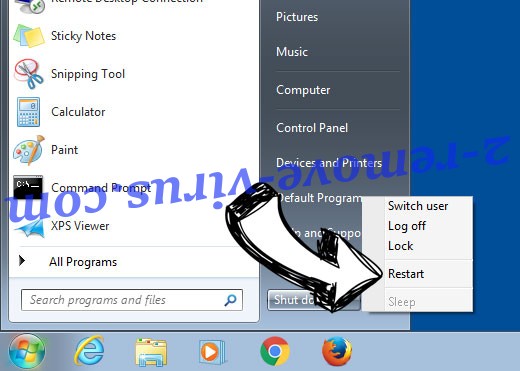
- Start tapping F8 when your PC starts loading.
- Under Advanced Boot Options, choose Safe Mode with Networking.

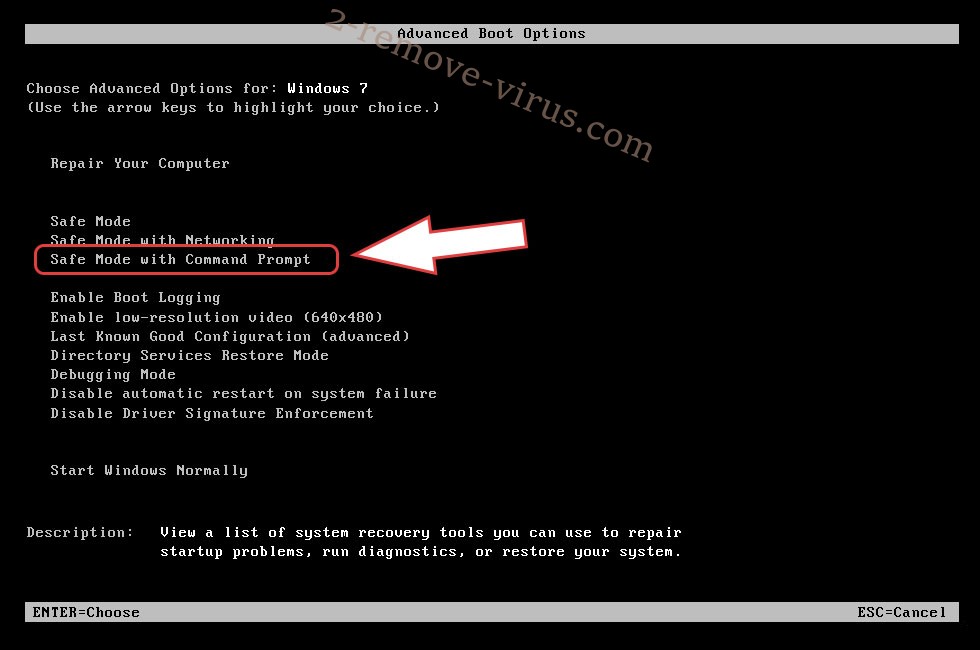
- Open your browser and download the anti-malware utility.
- Use the utility to remove .Connect file virus
Remove .Connect file virus from Windows 8/Windows 10
- On the Windows login screen, press the Power button.
- Tap and hold Shift and select Restart.

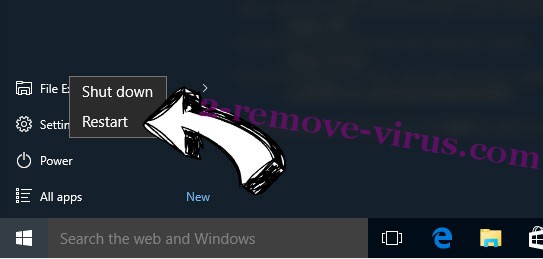
- Go to Troubleshoot → Advanced options → Start Settings.
- Choose Enable Safe Mode or Safe Mode with Networking under Startup Settings.

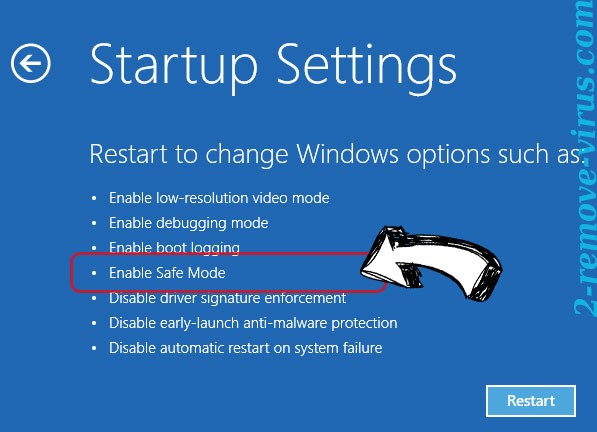
- Click Restart.
- Open your web browser and download the malware remover.
- Use the software to delete .Connect file virus
Step 2. Restore Your Files using System Restore
Delete .Connect file virus from Windows 7/Windows Vista/Windows XP
- Click Start and choose Shutdown.
- Select Restart and OK


- When your PC starts loading, press F8 repeatedly to open Advanced Boot Options
- Choose Command Prompt from the list.

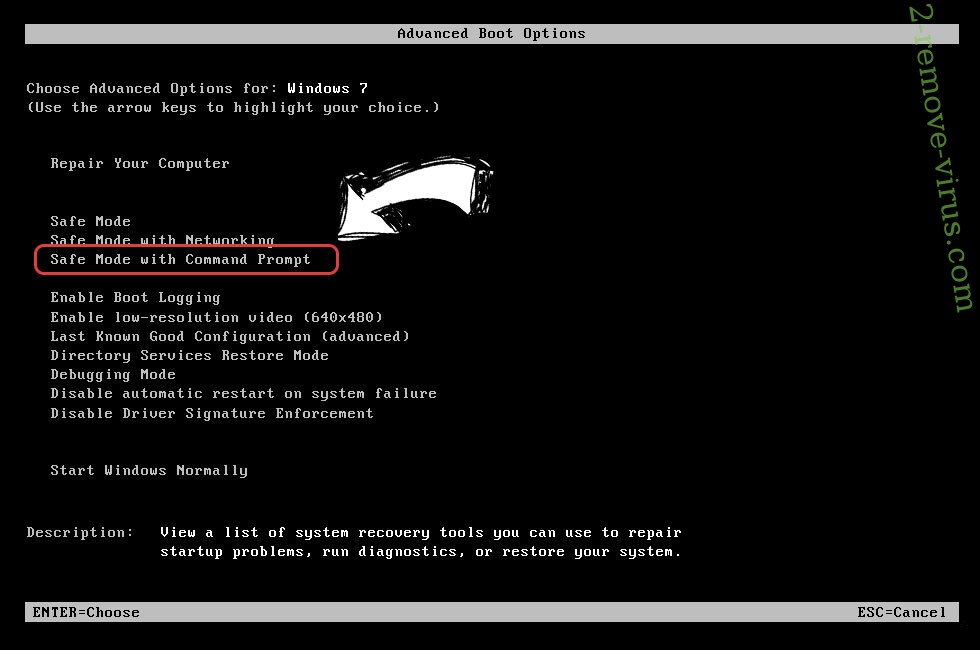
- Type in cd restore and tap Enter.

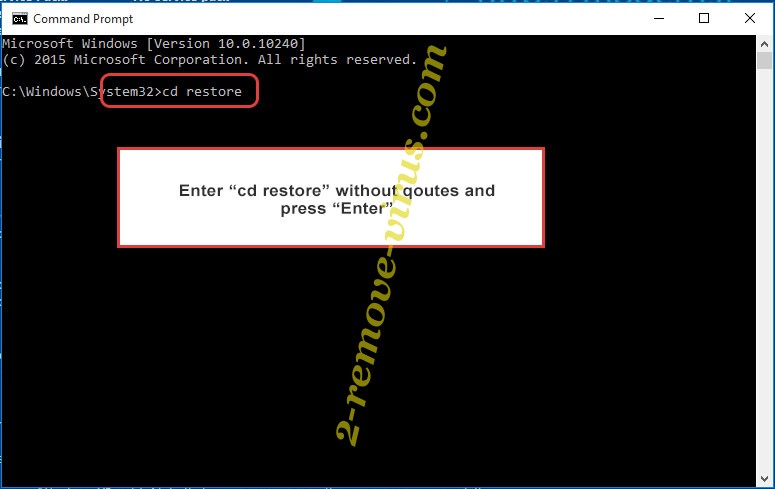
- Type in rstrui.exe and press Enter.

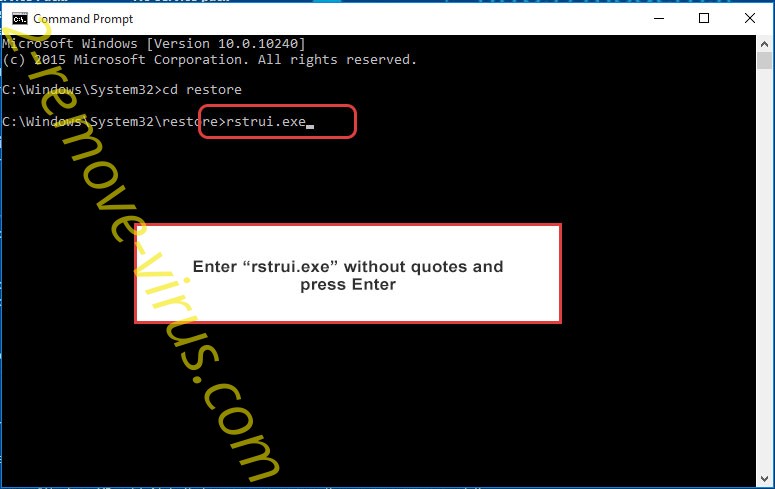
- Click Next in the new window and select the restore point prior to the infection.

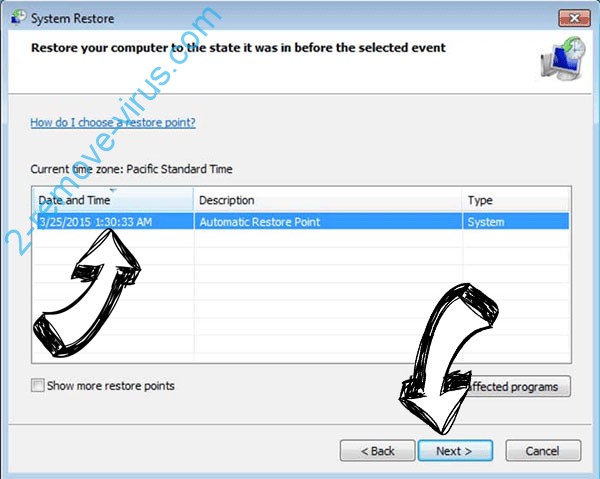
- Click Next again and click Yes to begin the system restore.

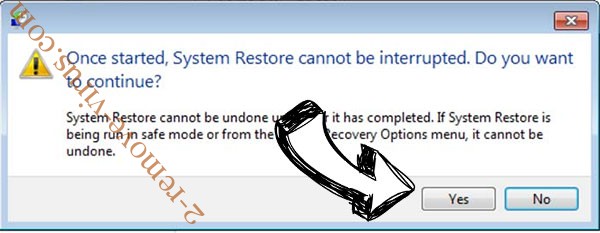
Delete .Connect file virus from Windows 8/Windows 10
- Click the Power button on the Windows login screen.
- Press and hold Shift and click Restart.


- Choose Troubleshoot and go to Advanced options.
- Select Command Prompt and click Restart.

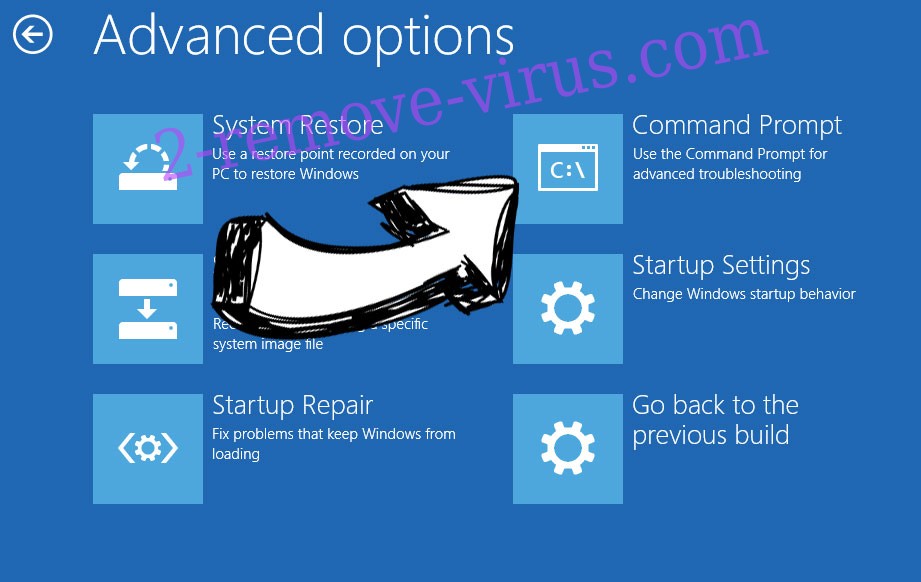
- In Command Prompt, input cd restore and tap Enter.


- Type in rstrui.exe and tap Enter again.


- Click Next in the new System Restore window.

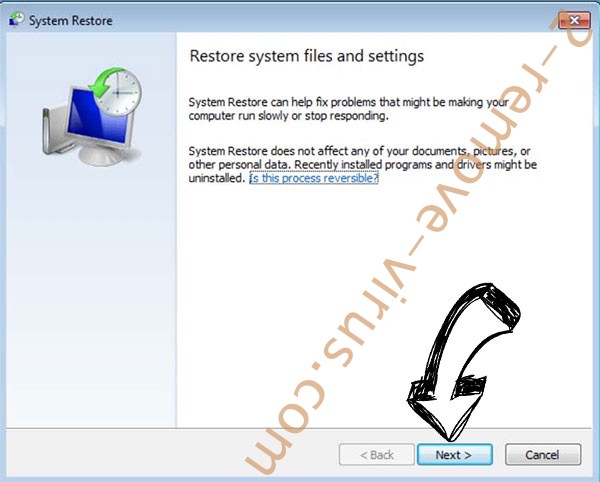
- Choose the restore point prior to the infection.


- Click Next and then click Yes to restore your system.


Site Disclaimer
2-remove-virus.com is not sponsored, owned, affiliated, or linked to malware developers or distributors that are referenced in this article. The article does not promote or endorse any type of malware. We aim at providing useful information that will help computer users to detect and eliminate the unwanted malicious programs from their computers. This can be done manually by following the instructions presented in the article or automatically by implementing the suggested anti-malware tools.
The article is only meant to be used for educational purposes. If you follow the instructions given in the article, you agree to be contracted by the disclaimer. We do not guarantee that the artcile will present you with a solution that removes the malign threats completely. Malware changes constantly, which is why, in some cases, it may be difficult to clean the computer fully by using only the manual removal instructions.
